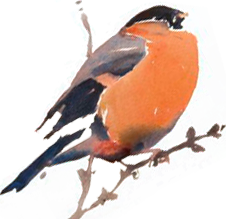The Motus Wildlife Tracking System, first established in North America in 2012, is a collaborative system developed to promote a global network of researchers to help track some of the smallest flying organisms, such as birds, bats and even insects. Using a radio telemetry approach, receiving stations can automatically detect individuals fitted with the mini, lightweight radio transmitters within a 10 km range, using a single radio frequency with high accuracy both spatially and temporally.
It overcomes some of the downsides of other tracking devices which can be too heavy for smaller animals, not very accurate in scale, or require recapture of the individuals to retrieve data. Motus data is instead collected automatically and continuously as the tags come into range of any receiving station, and is stored into a single, centralised and open source database. It therefore provides a unique framework for data sharing, with the goal of answering complex questions and improving our ecological understanding of animal migration and biology. So far, 2033 motus receiver stations have been installed worldwide in 34 different countries (now including Scotland!) and 47,719 animals have been tagged from 385 species. Results of the 800+ projects have already contributed to conservation efforts, ecological monitoring and planning as well as status assessments for species at risk.

Mike Martin, Chris Broome and Rachael Wilbourn at the Crail Motus station
The first Motus project in Scotland was inspired by a branch-wide online SOC talk in 2022 by Dr Lucy Mitchell who is an expert in Motus tracking technology, and who was able to use Motus to discover interesting migratory behaviour and directions in European Blackcap (Sylvia atricapilla) in England. Shortly after her talk, a small working group composed of members of the SOC and Tay Ringing Group was formed to share ideas on possible Motus projects, and after a member donation, we were able to achieve this historical milestone only last month, with the second station currently in the process of being installed!

Blackcap fitted with radio transmitter
In the early autumn 2024, we plan to tag around 20 Rock Pipits, of which there are two subspecies; Anthus petrosis petrosis a Scottish resident and Anthus petrosis littoralis, a Scandinavian migrant. Since 2021, the TRG have been studying Rock Pipits closely and have found evidence of wintering littoralis birds in Fife which suggests the establishment of a change of status for the species in Scotland. The aim of our study will be to explore the timing and direction of departure of our littoralis birds in the spring but also the timing of movements of birds to and from roosts, to give us a much better understanding of their behaviour and population dynamics. So watch this space!
Rachael Wilbourn
SOC Tayside Secretary
Blackcap photos © Lucy Mitchell; Crail photo © East Neuk Technology




